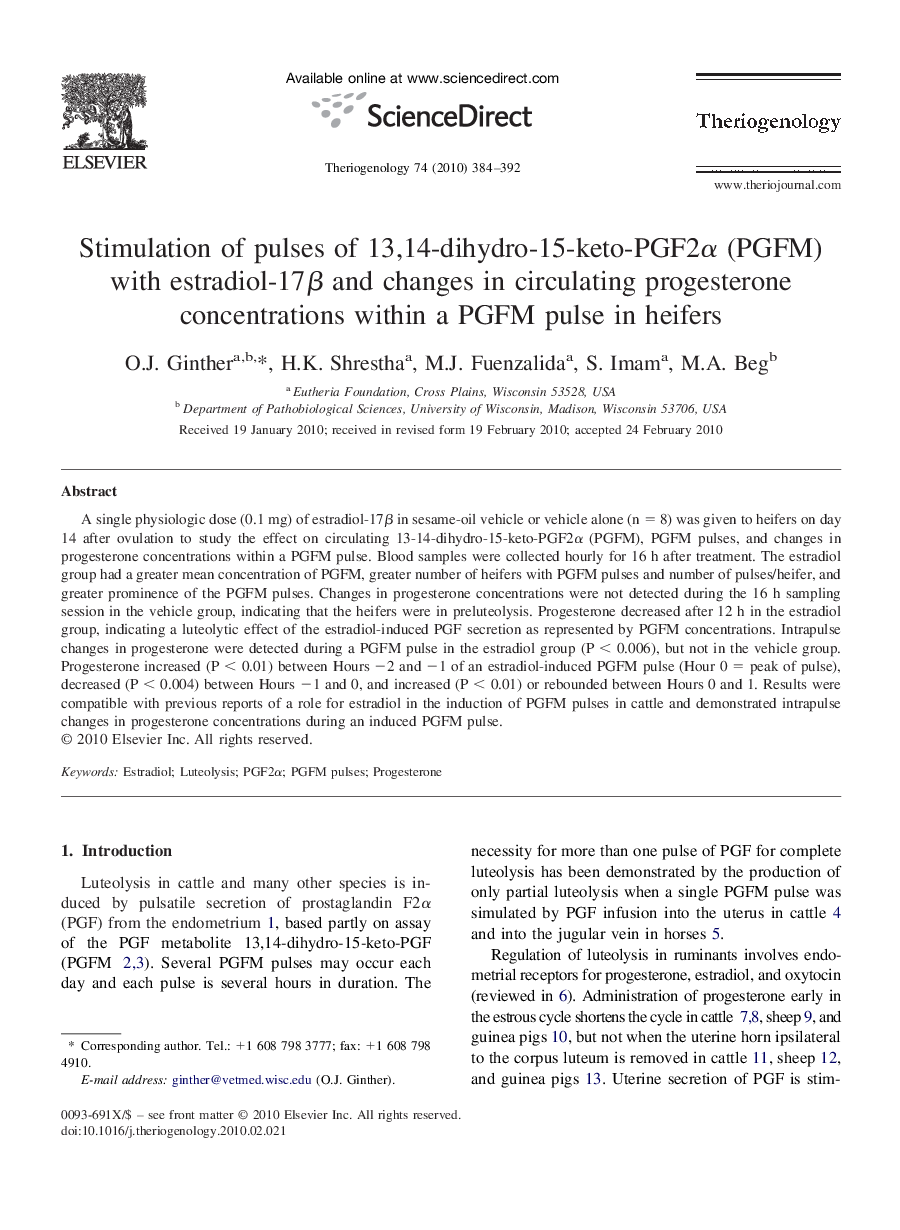| Article ID | Journal | Published Year | Pages | File Type |
|---|---|---|---|---|
| 2097870 | Theriogenology | 2010 | 9 Pages |
Abstract
A single physiologic dose (0.1 mg) of estradiol-17β in sesame-oil vehicle or vehicle alone (n = 8) was given to heifers on day 14 after ovulation to study the effect on circulating 13-14-dihydro-15-keto-PGF2α (PGFM), PGFM pulses, and changes in progesterone concentrations within a PGFM pulse. Blood samples were collected hourly for 16 h after treatment. The estradiol group had a greater mean concentration of PGFM, greater number of heifers with PGFM pulses and number of pulses/heifer, and greater prominence of the PGFM pulses. Changes in progesterone concentrations were not detected during the 16 h sampling session in the vehicle group, indicating that the heifers were in preluteolysis. Progesterone decreased after 12 h in the estradiol group, indicating a luteolytic effect of the estradiol-induced PGF secretion as represented by PGFM concentrations. Intrapulse changes in progesterone were detected during a PGFM pulse in the estradiol group (P < 0.006), but not in the vehicle group. Progesterone increased (P < 0.01) between Hours â2 and â1 of an estradiol-induced PGFM pulse (Hour 0 = peak of pulse), decreased (P < 0.004) between Hours â1 and 0, and increased (P < 0.01) or rebounded between Hours 0 and 1. Results were compatible with previous reports of a role for estradiol in the induction of PGFM pulses in cattle and demonstrated intrapulse changes in progesterone concentrations during an induced PGFM pulse.
Related Topics
Life Sciences
Agricultural and Biological Sciences
Animal Science and Zoology
Authors
O.J. Ginther, H.K. Shrestha, M.J. Fuenzalida, S. Imam, M.A. Beg,
